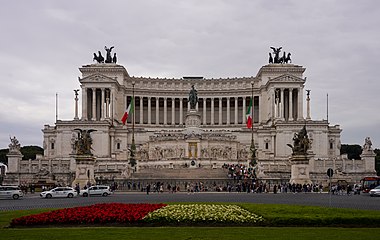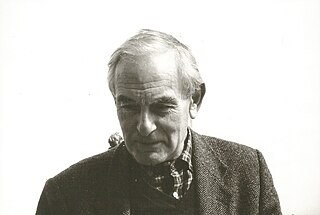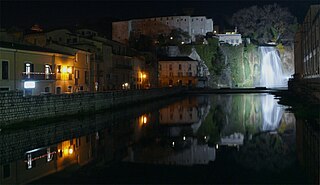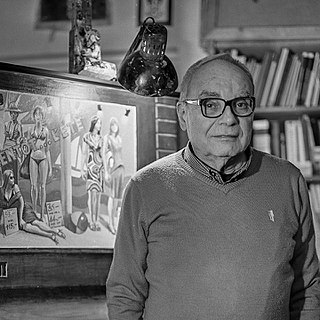
The Polo Museale del Lazio (literally 'Museum Center of Lazio') is an office of Italy's Ministry of Cultural Heritage. Its seat is in Rome in the Palazzo Venezia.

The Polo Museale del Lazio (literally 'Museum Center of Lazio') is an office of Italy's Ministry of Cultural Heritage. Its seat is in Rome in the Palazzo Venezia.
The office was established on August 29, 2014 and started to work on December 11, 2014, acquiring and organizing museums, institutions and archaeological areas previously managed by eleven offices. Like the others Poli Museali of other regions of Italy, it depends from the Direzione Generale Musei of the same MIBACT.
The Polo Museale manages and promotes Lazio's museums, institutions, archaeological areas and other cultural sites belonging or given over to the Italian State. An important function of the office is to promote the so-called Art Bonus, [1] a new model of tax relief connected to the world of arts which was introduced in 2014. [2] The office defines common strategies and aims, promotes the integration and organization of museological and cultural itineraries, working together with the Segretario Regionale.

The Polo Museale del Lazio manages 43 museological institutes: their chronology spans from antiquity, [3] the Middle Ages [4] and the modern age [5] to the contemporary age. [6] Some of them deal with the world of anthropology, but the major weight of the office shifts on archaeology, history, art and architecture.
A total of some 10 million per year visit institutions which are directly managed by the Polo Museale del Lazio, making it one of the most important institutions of its kind. The most visited sites are the Pantheon, Castel Sant'Angelo, the Abbey of Montecassino, Villa d'Este and Hadrian's Villa.
The following is an alphabetical list of museums, institutions and cultural sites directly managed by the Polo Museale del Lazio (parentheses indicates the province): [7]
Mauro Cristofani was a linguist and researcher in Etruscan studies.

Lucos Cozza was a Roman archaeologist.
Lazio is a region in central Italy that includes the city and province of Rome. This article is about the music of the region of Lazio excluding Rome, itself. For that, see Music in Rome.) Lazio is surrounded by music.

Valle Latina is an Italian geographical and historical region that extends from the south of Rome to Cassino, corresponding to the eastern area of ancient Roman Latium.
Corpus Speculorum Etruscorum is an international project with the goal to publish all existing Etruscan bronze mirrors. The first three volumes were published in 1981. A total of thirty-six fascicles has been produced.

The Museo Nazionale della Magna Grecia, Museo Archeologico Nazionale di Reggio Calabria or Palazzo Piacentini is a museum in Reggio Calabria, southern Italy, housing an archaeological collection from sites in Magna Graecia.
The Istituto Italiano per l'Africa e l'Oriente (IsIAO), known in English as the Italian Institute for Africa and the Orient, was established in Rome in 1995, as the result of the merging of Italian Institute for the Middle and the Far East (IsMEO) with the Istituto Italo-Africano (IIA). It closed in 2012. Its museum collection is now overseen by the Polo Museale del Lazio.

Antonio del Massaro da Viterbo, or Antonio da Viterbo, nicknamed il Pastura was an Italian painter.

Joseph Pace is an Italian painter and sculptor.

Tourism in Abruzzo has become one of the most prosperous sectors in the economy of Abruzzo, and in recent years has seen a remarkable growth attracting numerous tourists from Italy and Europe. According to statistics from the Italian institute of statistics (ISTAT), in 2007 arrivals totaled 1,371,155 Italians and 189,651 foreigners. A total of 7,374,646 arrivals were tourists, a figure that puts the region seventeenth among the Italian regions for numbers of tourists per year. According to market analysis and sector studies on tourism in the Abruzzo National Society TurisMonitor 2012, after an increase that was estimated at between 4 and 5% of international tourist arrivals in the Abruzzo region in 2012 was estimated to increase that international arrivals will be around 3/4% by the end of 2012 with staff working in tourism will increase settling at about 25,000 people. Always position first-arrivals from Germany. A moderate support to tourism is also given to the Abruzzo Airport with many low cost and charter flights connecting the entire region with the rest of Europe.

Alessandro Kokocinski was an Italian-Argentine painter, sculptor and set designer, of Polish-Russian origin.
The Bianca Monticellana or Capra Bianca di Monte San Biagio is an indigenous breed of domestic goat from Lazio in central Italy. It takes its name from the town and comune of Monte San Biagio, which until 1862 was known as Monticelli. It is raised in the provinces of Frosinone and Rome, on the Monti Aurunci, the Monti Ausoni, the Monti Lepini, the Monti delle Mainarde in the Val Comino and on the Monti Prenestini. The area of distribution is very similar to that of the Ciociara Grigia, from which it is however quite distinct. The Bianca Monticellana breed descends from a flock of about 700 head of white goats brought to Monticelli from Villa Latina in about 1850 by the Minchella family of shepherds. It is probably the same breed described as "Bianca Romana" in the early years of the twentieth century, and not subsequently documented.

Sergio Ceccotti is an Italian painter. He lives and works in Rome.
Museo Civico may refer to:

Claudio Kevo Cavallini was an Italian sculptor. His nickname was "Kevo" with which he signed his works. At the age of 50, Claudio discovered that he could make sculptural forms from wood.

Michela Ramadori is an Italian art historian, author and academic.
Liquidazione SIAO_29_2016